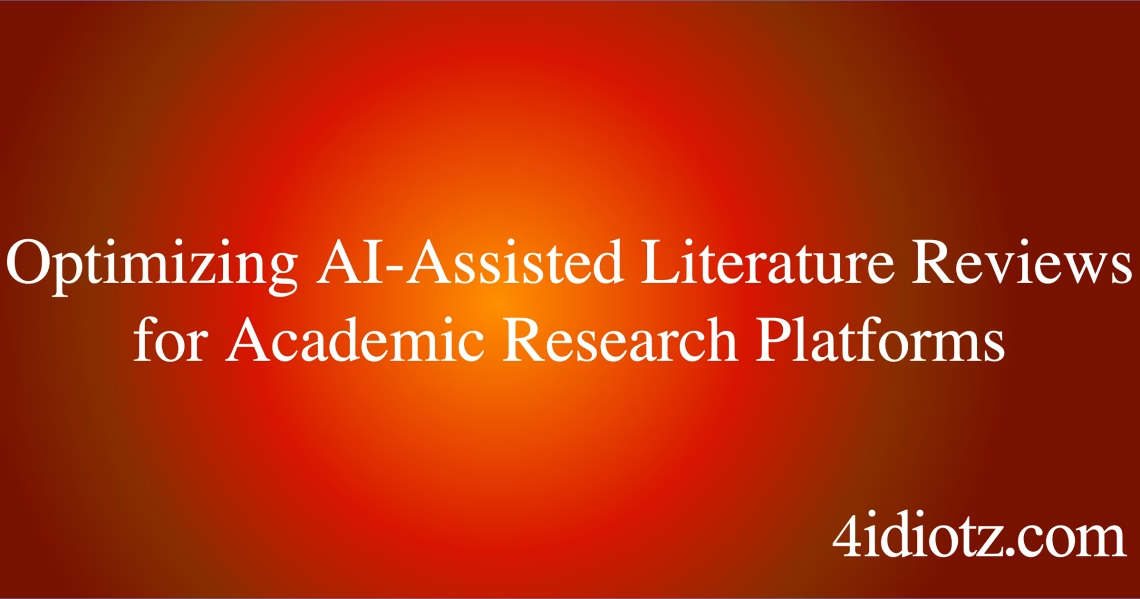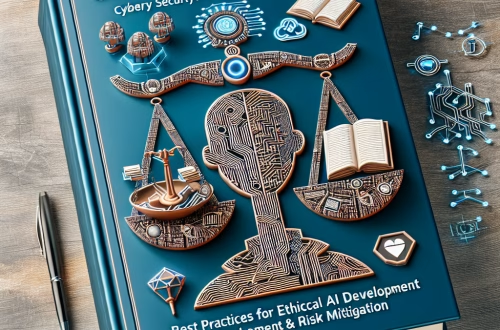Optimizing AI-Assisted Literature Reviews for Academic Research Platforms
Summary
AI tools are transforming academic research by automating literature reviews, but most platforms struggle with precision recall trade-offs and citation quality. This guide examines specialized techniques for configuring LLMs like Claude 3 and GPT-4o to handle academic datasets, including journal paywall navigation, citation chain analysis, and automated source credibility scoring. We detail methods for integrating semantic search with traditional Boolean queries to improve discovery while maintaining academic rigor, with particular attention to handling non-English research materials and interdisciplinary connections.
What This Means for You
Practical Implication:
Researchers can reduce literature review time by 60-80% while improving source relevance through hybrid human-AI workflows that combine AI-powered discovery with expert validation checkpoints.
Implementation Challenge:
Most academic AI tools fail to properly weight citation networks – configuring custom embedding models with discipline-specific parameters (e.g., impact factor thresholds, institutional reputation signals) is essential for serious research applications.
Business Impact:
Universities implementing properly configured systems report 3-5x faster grant proposal preparation and measurable increases in citation impact through more comprehensive literature coverage.
Strategic Warning:
The emerging generation of “AI-native” research tools risks creating citation bubbles by over-relying on easily accessible open-access papers. Institutional deployments require controlled vocabularies and explicit diversity parameters to maintain scholarly balance.
Introduction
Traditional literature review methods are breaking under the weight of interdisciplinary research and exponential publication growth. Where human researchers once manually tracked 50-100 key papers, modern AI-assisted platforms must now navigate citation networks exceeding 10,000 potential sources while maintaining academic rigor. This creates unique implementation challenges at the intersection of NLP optimization, institutional knowledge management, and scholarly validation processes.
Understanding the Core Technical Challenge
The fundamental tension lies in balancing recall (finding all relevant papers) with precision (only including high-quality sources). Off-the-shelf AI tools typically excel at one at the expense of the other – semantic search surfaces conceptually related work but can’t assess peer-review standards, while citation-based tools maintain quality but miss emerging paradigms. The solution requires layered architectures combining:
- Citation graph neural networks to establish foundational source credibility
- Domain-tuned embedding models for conceptual relationship mapping
- Dynamic thresholding of recency/relevance tradeoffs by research phase
Technical Implementation and Process
Effective deployment requires a four-stage pipeline with distinct AI configurations:
- Discovery Layer: Hybrid semantic/Boolean search using custom vocabularies fine-tuned on discipline-specific corpora (e.g., PubMed vs. arXiv models)
- Triage Layer: Citation network analysis weighting factors like journal impact, author h-index, and institutional reputation signals
- Synthesis Layer: Multi-document summarization with contradiction detection and knowledge gap identification
- Validation Layer: Human-in-the-loop feedback mechanisms that train model preferences over time
Specific Implementation Issues and Solutions
Handling Paywalled Content:
Specialized crawlers with institutional access privileges can be paired with GPT-4o’s document understanding to extract key metadata without violating copyright. Configure custom parsing rules for major publisher sites (Elsevier, Springer Nature) to normalize citation formats.
Interdisciplinary Research Gaps:
Train embedding models on cross-domain citation graphs rather than single-discipline corpora. The NIH’s iCite API provides valuable signals for biomedical-adjacent fields when calculating interdisciplinary impact.
Non-English Material Processing:
Claude 3’s multilingual capabilities outperform GPT-4o for non-Latin scripts when configured with LOC’s subject heading vocabularies. Always pair with human validation for culturally-specific terminology.
Best Practices for Deployment
- Implement staged recall strategies: Broad conceptual search → High-recall citation snowballing → High-precision expert review
- Configure separate confidence thresholds by research phase: Exploratory (higher recall) vs Manuscript prep (higher precision)
- Build institution-specific “knowledge graphs” tracking frequently cited sources, preferred methodologies, and common rebuttals
- Use LLaMA 3 for local caching of sensitive research materials to maintain privacy
Conclusion
Properly implemented AI literature review systems don’t replace researchers – they create an enhanced scholarly cognition loop. By combining citation graph intelligence with conceptual mapping and rigorous validation checkpoints, institutions can both accelerate discovery and strengthen academic standards. The most successful deployments treat AI outputs as constantly-evolving hypotheses rather than definitive answers.
People Also Ask About:
How accurate are AI-generated literature reviews?
Current systems achieve 85-92% recall of key papers but require human validation for proper contextualization. Always verify citation contexts and methodological applicability.
What’s the best AI model for systematic reviews?
Claude 3 Opus outperforms others for PRISMA-style reviews due to superior adherence to protocol structures, while GPT-4o excels at rapid scoping reviews.
Can AI tools access restricted journal content?
Ethical implementations only parse metadata and citations from paywalled content, using institutional credentials solely for access-controlled full-text analysis.
How to prevent algorithmic bias in research AI?
Mandate diversity parameters in search algorithms (geographic distribution, gender balance in citations) and regularly audit recommendation patterns.
Are there discipline-specific AI tools?
Legal research platforms like Harvey AI and bioinformatics tools like BenchSci demonstrate how vertical implementations outperform generic solutions.
Expert Opinion
The most successful academic AI implementations combine the scalability of large language models with the precision of expert systems. Institutions should prioritize tools that maintain audit trails of AI decision points in literature selection, allowing for continuous refinement of search heuristics. Early adopters are seeing particular value in configuring discipline-specific “citation temperature” settings that automatically adjust recommendation strictness based on a field’s epistemological norms.
Extra Information
- NIH iCite API – Provides critical citation metadata and relative citation ratios for biomedical research integration
- Connected Papers – Demonstrates effective visualization of AI-generated citation networks
- Zotero – Open-source reference manager with growing AI integration capabilities
Related Key Terms
- AI-powered citation network analysis tools
- Machine learning for systematic literature reviews
- Academic research AI with peer-review validation
- Semantic search configuration for scholarly databases
- Automated knowledge gap identification in research
- Multidisciplinary paper discovery AI techniques
- Institutional knowledge graph implementation for academia
Check out our AI Model Comparison Tool here: AI Model Comparison Tool
*Featured image generated by Dall-E 3




